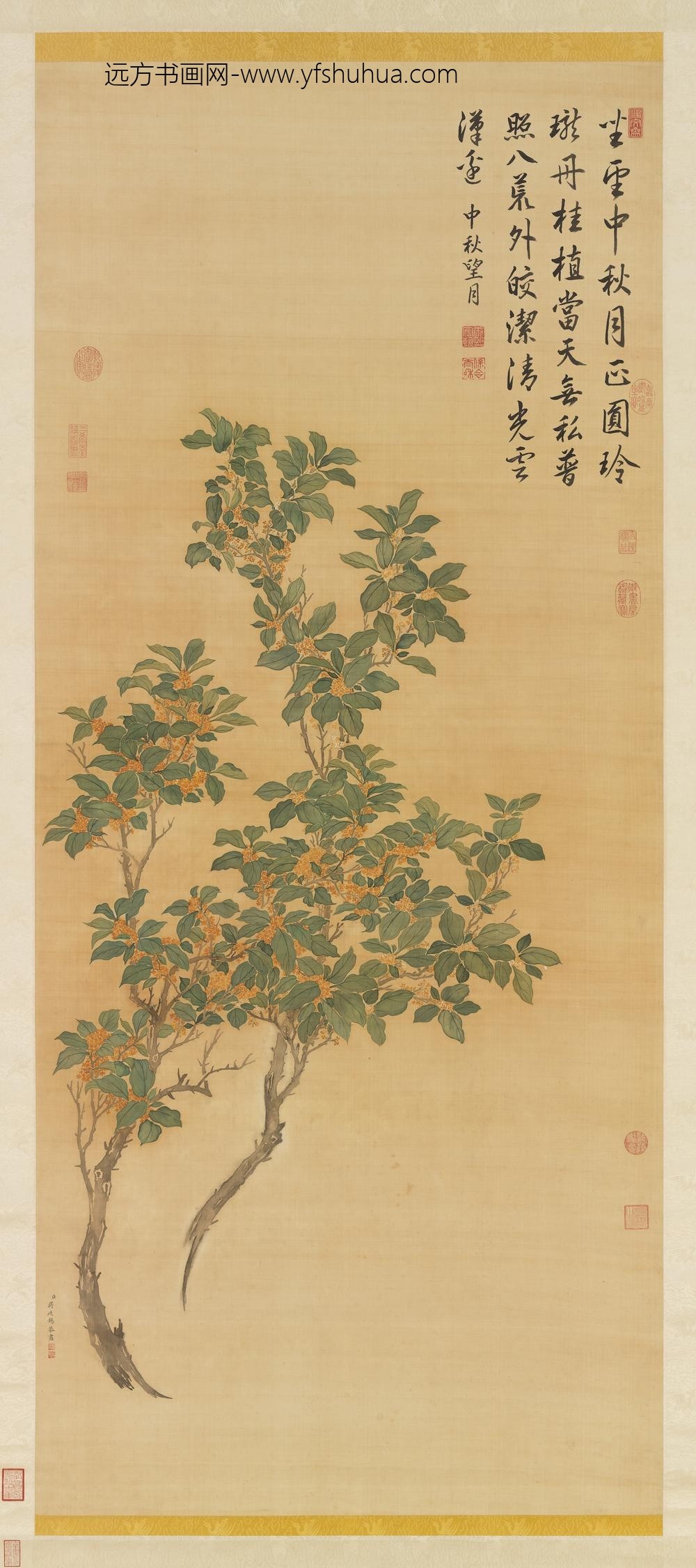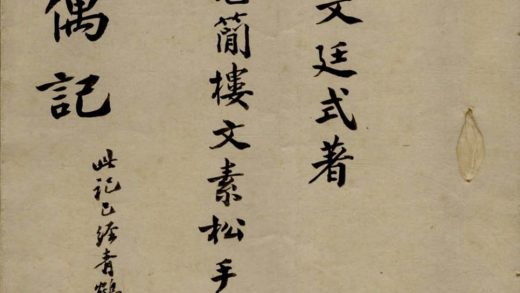【作品基本信息】
| 作者 | 蒋廷锡 |
| 品名 | 桂花图轴 |
| 朝代 | 清代 |
| 文件大小 | 18.04MB |
| 分辨率(DPI) | 300×300 |
| 像素大小 | 1634×3681 |
| 尺寸(CM) | 13.83×31.16 |
| 作品数量 | 1 |
| 作品收藏 | 台北故宫博物院 |
| 图片格式 | 默认提供TIF和JPG两个版本 |
基本数据
| 藏品类型 | 绘画 |
| 品名 |
清蒋廷锡桂花 轴 Sweet Osmanthus |
| 分类 | 绘画 |
| 作者 | 蒋廷锡 |
| 数量 | 一轴 |
典藏尺寸
| 【位置】 | 【尺寸】(公分) |
| 本幅 | 172.8×74.5 |
质地
| 【质地位置】 | 【质地】 |
| 本幅 | 绢 |
题跋数据
| 【题跋类别】 | 【作者】 | 【位置】 | 【款识】 | 【书体】 | 【全文】 |
| 作者款识 | 蒋廷锡 | 本幅 | 臣蒋廷锡恭画 | 楷书 | |
|
印记: 臣廷锡、朝朝染翰 |
|||||
| 题跋 | 清圣祖 | 本幅 | 中秋望月 | 行书 | 坐望中秋月正圆。玲珑丹桂植当天。无私普照八荒外。皎洁清光云汉边。中秋望月。 |
|
印记: 佩文斋、康熙宸翰、保合太和 |
|||||
印记资料
| 【印记类别】 | 【印记】 |
| 鉴藏宝玺 | 乾隆御览之宝 |
| 鉴藏宝玺 | 御书房鉴藏宝 |
| 鉴藏宝玺 | 宣统御览之宝 |
| 鉴藏宝玺 | 嘉庆御览之宝 |
| 鉴藏宝玺 | 乾隆鉴赏 |
| 鉴藏宝玺 | 石渠宝笈 |
| 鉴藏宝玺 | 宜子孙 |
| 鉴藏宝玺 | 三希堂精鉴玺 |
主题
| 【主题类别】 | 【主题(第一层)】 | 【主题(第二层)】 | 【主题说明】 |
| 主要主题 | 花草 | 桂花 |
技法
| 【技法】 | 【技法细目】 |
| 没骨 |
参考数据
| 【类别】 | 【参考数据】 |
| 收藏着录 | 石渠宝笈初编(御书房),下册,页1159 |
| 收藏着录 | 故宫书画录(卷八),第四册,页99 |
| 收藏着录 | 故宫书画图录,第十一册,页75-76 |
| 内容简介(中文) |
蒋廷锡(公元一六六九至一七三二年),字扬孙,号西谷,又号青铜居士,江苏常熟人。康熙四十二年进士,官至大学士。多以逸笔写生,山水生动超逸。间作水墨折枝窠石,及兰竹小品,极有韵致。尝画塞外花卉七十种,为宫禁所宝。流传真迹极少,着有青铜居士集。 蒋廷锡为康熙时代之花鸟大家,本幅为没骨写生折枝桂花,钩染点叶,笔笔生动,设色沉艳传神。画上有康熙御笔中秋望月的题诗,君臣雅集,诗文与绘画相互配合,可谓相得益彰。 |
| 内容简介(英文) |
Chiang T’ing-hsi (style name Yang-sun; sobriquets Hsi-ku and Ch’ing-t’ung chu-shih) was a native of Ch’ang-shu, Kiangsu. He received the chin-shih civil service degree in 1704 and went on to serve as a Grand Secretary. He used spontaneous brush strokes to create realistic paintings and his landscapes were lively and untrammelled. Chiang occasionally depicted “broken-branch” flowers and rocks in monochrome ink as well as small works of bamboo and orchids, which were truly elegant and refined. He depicted and recorded seventy types of flowers from the northern frontier, the paintings of which were stored in the Forbidden City as treasures. His surviving works are few, and his collected writings are found in Ch’ing-t’ung chu-shih chi. Chiang T’ing-hsi was one of the most skilled painters of birds-and-flowers during the reign of the K’ang-hsi emperor (r. 1662-1722). This painting in the “boneless” style of ink washes depicts the broken branch of an osmanthus bush with blossoms. The brushwork is lively and the colors vivid. The painting bears a poetic inscription by the K’ang-hsi emperor on the subject of the mid-autumn moon. Painting and poem are well-matched and complement the aesthetic qualities of each. |
【作品展示】

清蒋廷锡桂花轴



-520x293.jpg)
